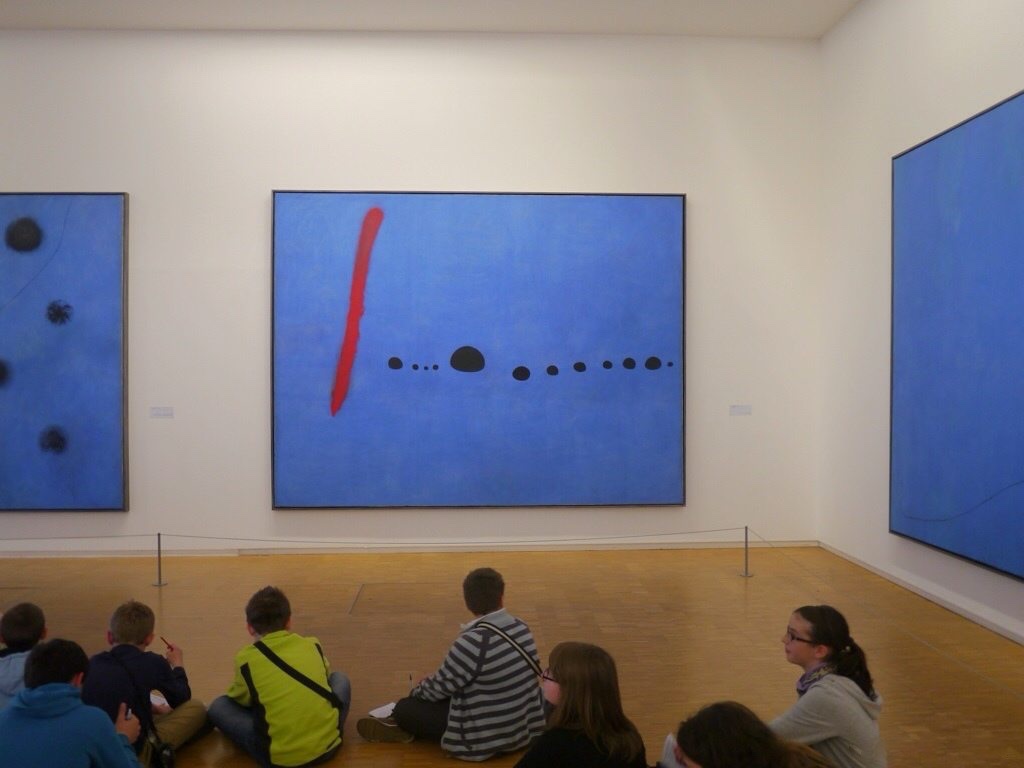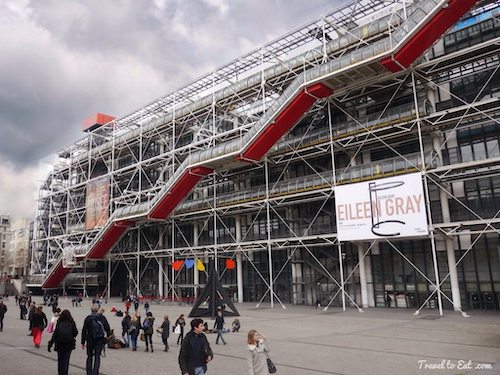
We ran into the Pompidou Center when we went to the Hotel de Ville for some supplies. Located in the district of Beaubourg on Paris' Right Bank, the Centre George Pompidou (or more simply, the Pompidou Center) is a factory-style structure that cuts a sharp contrast with the older, traditional buildings that surround it. It houses the Bibliothèque publique d'information, a vast public library, the Musée National d'Art Moderne which is the largest museum for modern art in Europe, and IRCAM, a centre for music and acoustic research. Because of its location, the Centre is known locally as Beaubourg. It is named after Georges Pompidou, the President of France from 1969 to 1974 who approved its creation (it was actually proposed by Charles DeGaulle), and was officially opened in 1977 by President Valéry Giscard d'Estaing. The Centre Pompidou has had over 150 million visitors since 1977.
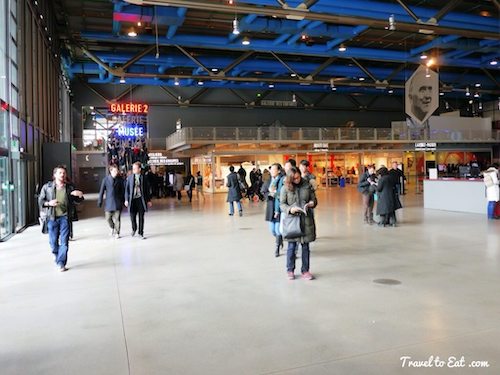
When you walk inside, you become aware of how enormous this building is, you feel as though you are in an airplane hanger, actually you could park several airplanes there. The pipes and ducts are all color-coded: blue for air, green for water, red for elevators, yellow for electricity, gray for corridors and white for the building itself. The Center was designed by Italian architect Renzo Piano; British architect Richard Rogers; and Italian architect Gianfranco Franchini, assisted by Ove Arup & Partners. The project was awarded to this team in an architectural design competition, whose results were announced in 1971.
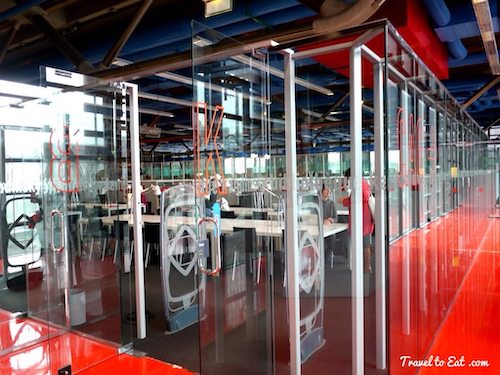
The library occupies the first three floors of the building, while the museum's permanent collection is located on floors 4 and 5. The first and top floor are used for large expositions. The Library contains a range of encyclopedic collections of materials that include up-to-date documents in every possible format: printed materials, sound and visual documents, digital materials. They give access to knowledge, entertainment and culture, information and lifelong learning, like retraining materials for those out of work. Admission to the library is free.
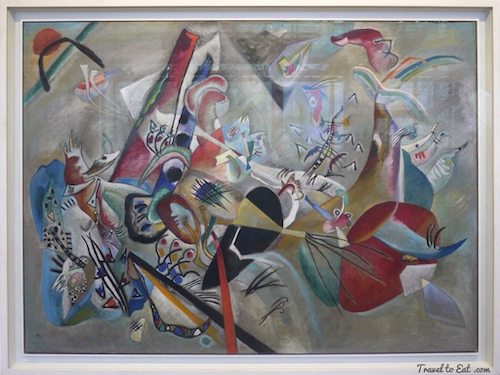
The Kandinsky Library (Bibliothèque Kandinsky) is the documentation and research center of the MNAM-CCI. It is one of the leading libraries specialized in the arts, and all fields of the visual arts are represented. It contains a rich collection of books by artists, private archives and 20th century manuscripts originating from collectors and also major artists. The Kandinsky Library is open to researchers with appropriate credentials.
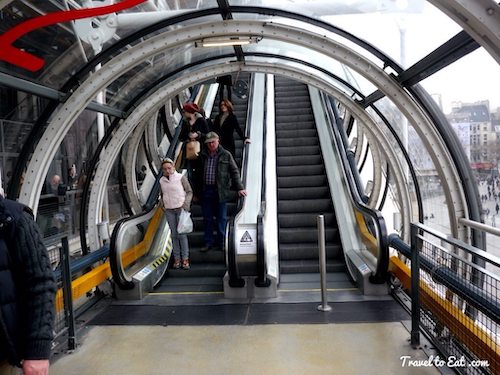
You get to the top floors on escalators encased in plexiglass tubes. Lisa doesn't like heights, so it was a little traumatic for her. Many of the people visiting the museum do so in order to take pictures from the balconies. they were closed on the day we visited. The museum has one of the most important collections of modern art. Its more than 59,000 works cover a broad spectrum of 20th century arts.
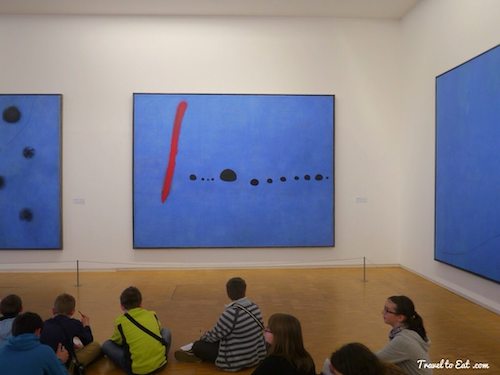
The 4th floor contains works from 1905 to 1965 and covers art movements such as fauvism, abstract art, surrealism and cubist art. Some of the featured artists include Matisse, Kadinsky, Miró and Picasso. When you enter the fourth floor, you are confronted with several large blue canvases by Miró. He made the background blue because it was “the color of his dreams”. He painted the one above, Bleu II in 1961. The museum had several children's groups visiting, I think this a great thing in France, we have yet to visit a museum here that does not have a large group of children, even museums such as this that are conceptually difficult. This is a huge collection of modern art and I am going to include only a few paintings, just to illustrate the flow and richness of the museum collection.
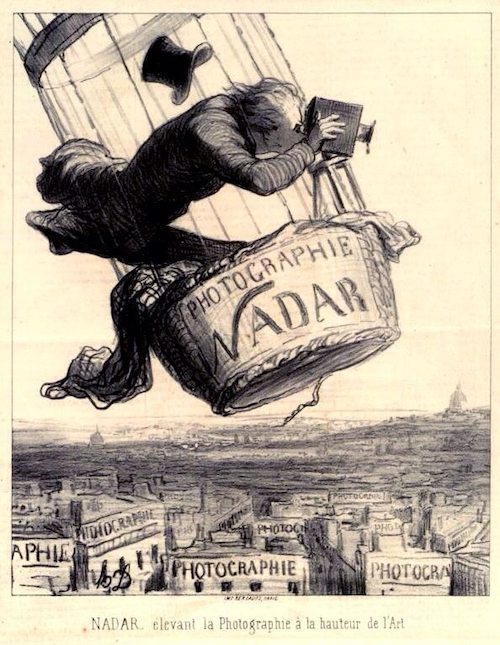
In 1874 the anonymous society of painters, sculptors and engravers, composed of Pissarro, Monet, Sisley, Degas, Renoir, Cézanne, Guillaumin and Berthe Morisot, held their first exhibition of Impressionist Art in the studio of the photographer Felix Nadar. Nadar shared many of the artistic goals of the impressionists and although photography was in its infancy, the ultimate fate of representational art was clear to see. I have included a wonderful essay by Edward Steichen below that you might enjoy reading regarding photography and art.
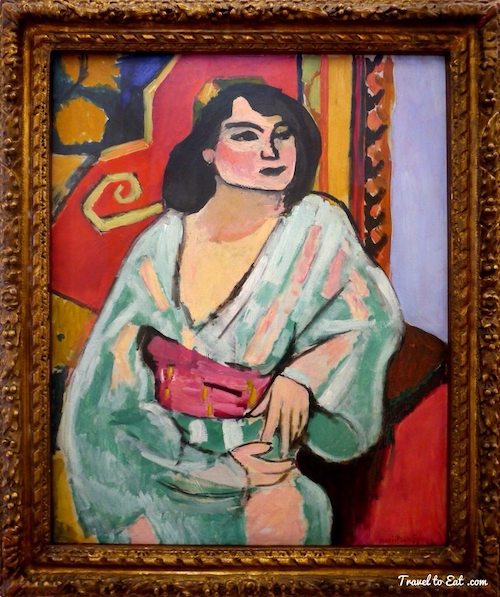
The museum opens with Fauvism, a short lived successor to Impressionism. The movement as such lasted only a few years, 1904–1908, and had three exhibitions. The leaders of the movement were Henri Matisse and André Derain. The paintings of the Fauves were characterized by seemingly wild brush work and strident colours, while their subject matter had a high degree of simplification and abstraction.
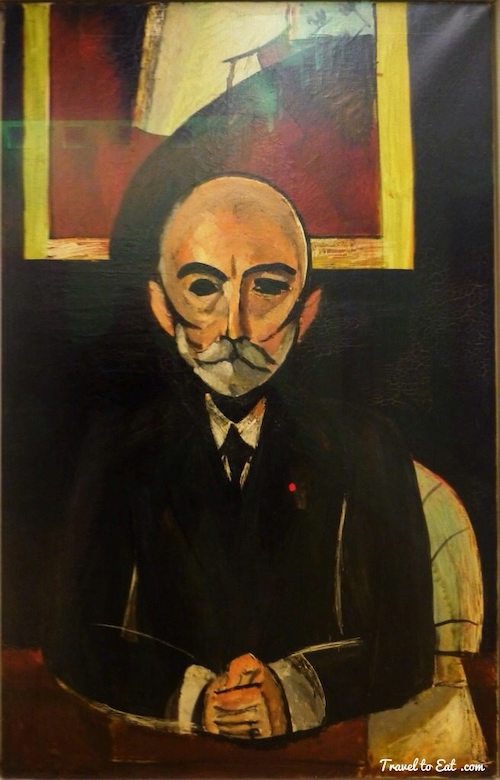
After 1907 the chromatic explosion that had marked the early period of fauvism began to calm down. The search for a rhythmic harmony won out over all descriptive concerns. There were fewer colors, and they appeared increasingly as blocks of pure and intense tone, while the line, treated as arabesque or used as an outline, imposed its own dynamic. While Matisse gave his portraits an austere monumentality, Braque, Derain, Duty, Van Dongen, Vlaminck were influenced by Cezanne. They have a nice collection of Matisse.
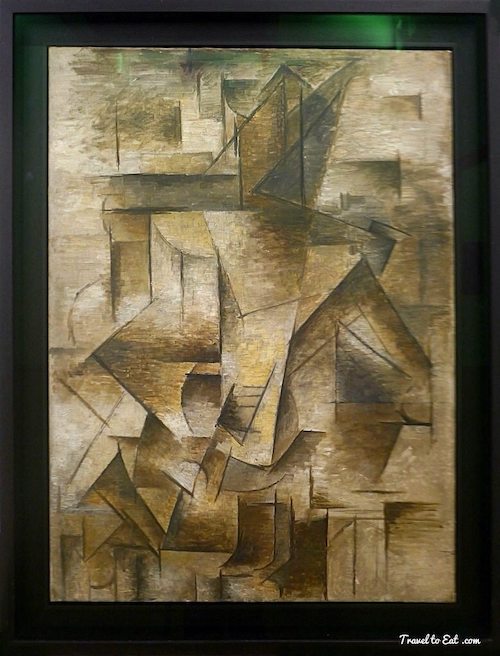

Analytic cubism was jointly developed by Pablo Picasso and Georges Braque from about 1908 through 1912. Juan Gris became a Cubist In 1911, strongly influenced by the investigations of Picasso and Braque, whose innovations (analytic decomposition of the subject, stenciled lettering. collage etc.) he assimilated in his own, highly personal style. The painting by Gris above reveals the tension between reference to reality (in the chair, the pitcher, the parquet etc.) and its abstract architecture.
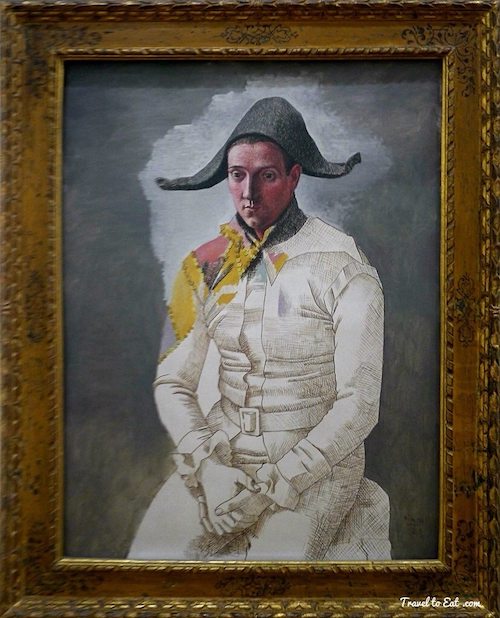
Picasso's best known alter ego is the Harlequin, a mysterious character with classical origins who has long been associated with the god Mercury and with Alchemy and the Underworld. The painting above shows Catalan painter Jacinto Salvado posing for the first of a series of Harlequin paintings. They have a very nice collection of Gris and Picasso.
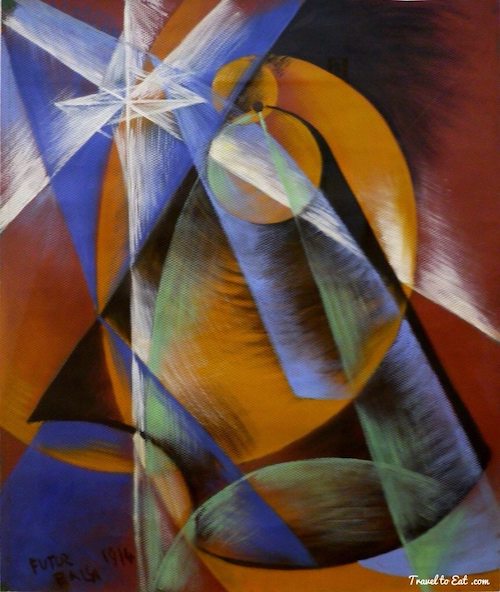
Futurism was an artistic and social movement that originated in Italy in the early 20th century. The Futurists admired speed, technology, youth and violence, the car, the airplane and the industrial city, all that represented the technological triumph of humanity over nature. Futurism could hardly fail to be incited by the dynamics of the cosmos. Balla devoted several series of works to celestial phenomena. His observation of a transit of Mercury across the face of the Sun on November 7, 1914 inspired six paintings. In the painting shown above, Balla uses cubism to illustrate movements and speed, emphasizing the Futurists' insistence that the perceived world is in constant movement. The series of concentric circles represent both the movement of the celestial bodies and the telescope itself.
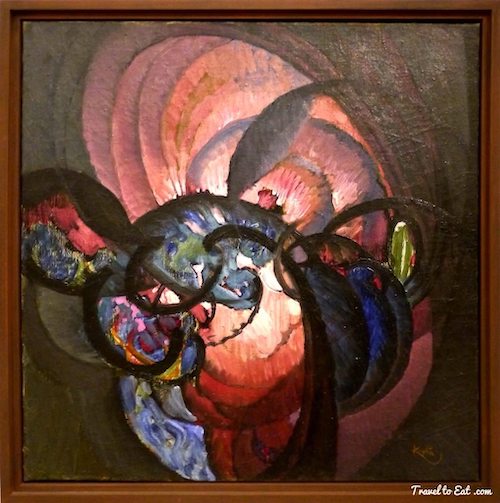

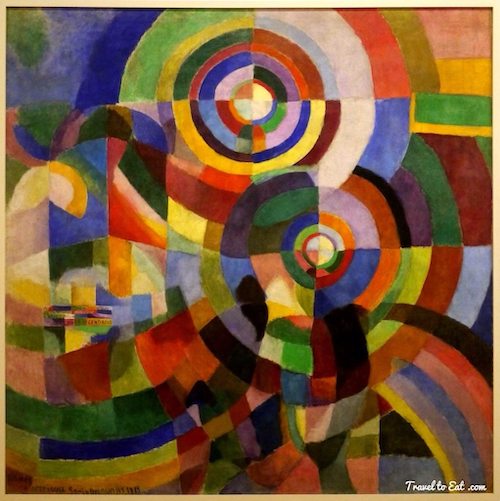
The abstract revolution occurred almost simultaneously across Europe around 1911-1913, and it is difficult today to say whether Kandinsky, Kupka or Delaunay was the first to cross the boundary to non-representational painting. Analyzing optical phenomena in terms of the decomposition of white light by the prism, Robert and Sonia Delaunay, Kupka and the Futurist Balla produced non-representational compositions with sometimes cosmic overtones. The work of Sonja Delaunay is centered on manifestations of light, considered as the original creator. The color is perfectly independent freed from form. The words on the canvas are extracts from Prose of the Trans-Siberian (La Prose du Transsibérien), a poem written in 1913 by Blaise Cendrars, from which the artist took great inspiration for her work. They have a very nice collection of the Delaunays, Kupta and Kandinsky.
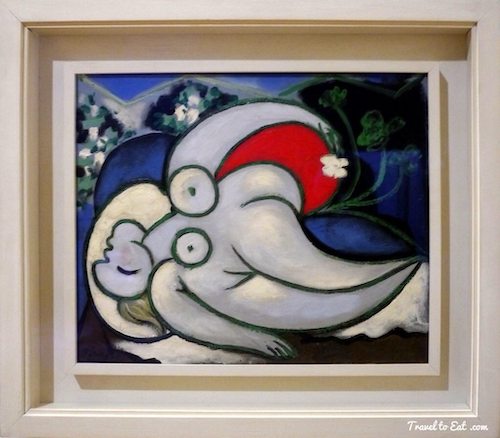
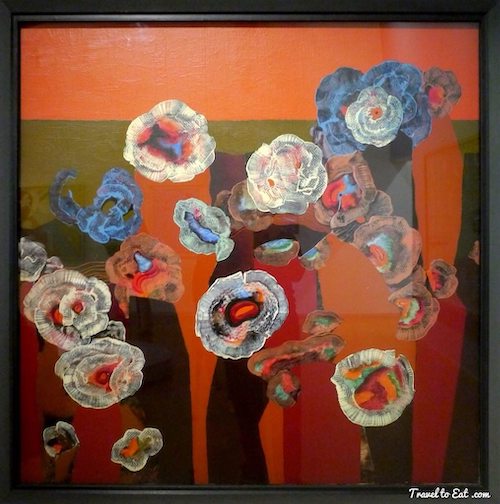
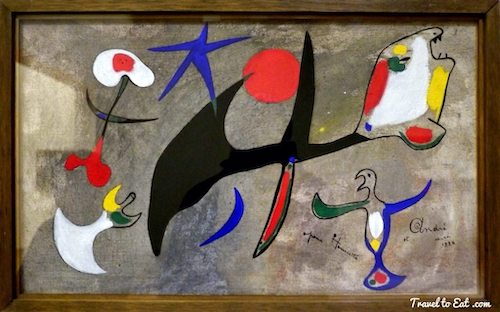
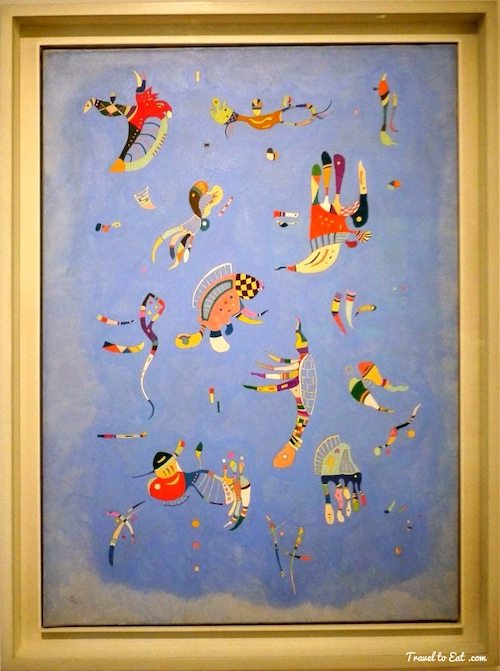
It was in 1936, at the exhibition Cubism and Abstract Art at MoMA, New York, that Alfred H. Barr Jr. introduced the term 'biomorphism' to distinguish such work from geometric abstraction – this “ism”, however, representing a shared feature rather than a movement to which any painter declared allegiance. The Surrealists deployed these organic and vegetal forms, in part the fruit of chance; not only Arp but also Calder, Tanguy and Miró. Familiar with the Surrealist painting of Miró and Arp after his move to Paris in 1933, Kandinsky introduced organic motifs drawn from biological illustrations found in the scientific works he had already used as sources of images in his teaching.
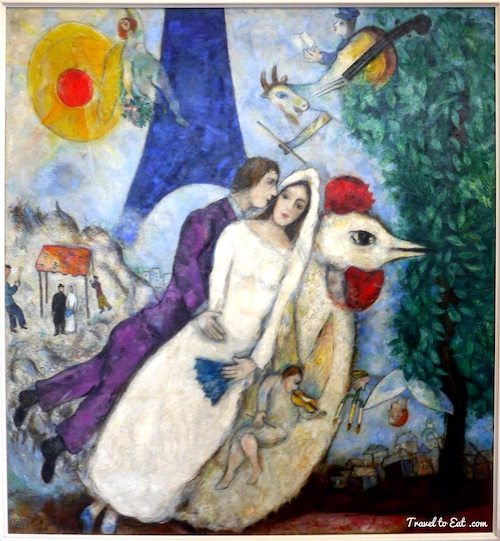
Chagall's early life left him with a “powerful visual memory and a pictorial intelligence”, writes Goodman. After living in France and experiencing the atmosphere of artistic freedom, his “vision soared and he created a new reality, one that drew on both his inner and outer worlds.” But it was the images and memories of his early years in Belarus that would sustain his art for more than 70 years. In all cases Chagall's “most persistent subject is life itself, in its simplicity or its hidden complexity… He presents for our study places, people, and objects from his own life”. He was an early modernist, and created works in virtually every artistic medium, including painting, book illustrations, stained glass, stage sets, ceramic, tapestries and fine art prints.
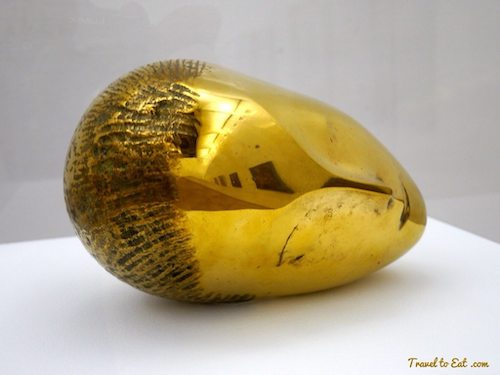
Constantin Brâncuși is considered the father of modern sculpture. The famous Sleeping Muse is, originally, the face of the Baroness Frachon, of whom Brancusi had already made several portraits from 1908 to 1909. With this work, the entire expression is diluted into the oval shape of the head. The face seems to be born to a new birth, more spiritual, from which emanates a sense of caim and stability. In A History of Western Art, Adams says that the sculpture has “an abstract, curvilinear quality and a smooth contour that creates an impression of elegance”. The qualities which produce the effect can particularly be seen in the shape of the eyes and in the set of the mouth.
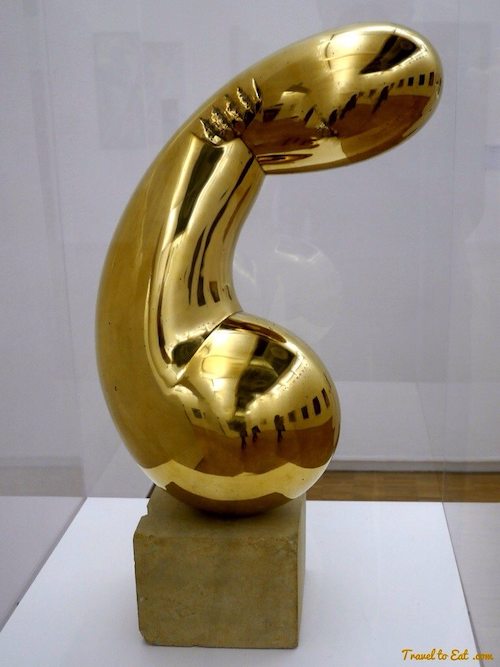
After being refused by the Romanian Communist government, he bequeathed part of his collection to the French state on condition that his workshop be rebuilt as it was on the day he died. A reconstruction of Brâncuși's onetime studio in Paris is open to the public. Architect Renzo Piano reproduced Brancusi’s studio on one side of the Place Georges Pompidou, next to the Centre. The layout of the studio has been reconstituted down to the last detail with Brancusi’s sculptures, photographs, manuals, discs and tools to satisfy the artist’s wish to have his work displayed in its entirety. The phallic shape of Princess X above scandalized the Paris salon. “Princess X” was revealed to be Princess Marie Bonaparte, direct descendant of the younger brother of Napoleon Bonaparte. Brâncuși represented and/or caricatured her life as a large gleaming bronze phallus. This phallus symbolizes the model's obsession with the penis and her lifelong quest to achieve vaginal orgasm, with the help of Sigmund Freud. (real life is stranger than fiction).
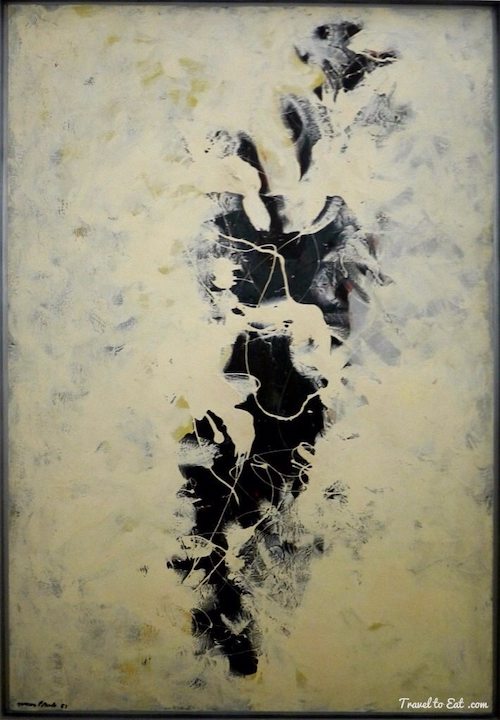
Abstract expressionism was an American post World War II art movement. It was the first specifically American movement to achieve international influence and put New York City at the center of the western art world, a role formerly filled by Paris. The post-war period left the capitals of Europe in upheaval with an urgency to economically and physically rebuild and to politically regroup. In Paris, formerly the center of European culture and capital of the art world, the climate for art was a disaster and New York replaced Paris as the new center of the art world. Now, even that center is on the move. After several years of drip painting, in 1951 Jackson Pollock reintroduced the human figure into his works. As seen above, in The Deep, the motif looks like a cloud of milky paint, a creamy mass with a break in the middle revealing a matte black ground with touches of red. This was one of his last paintings.
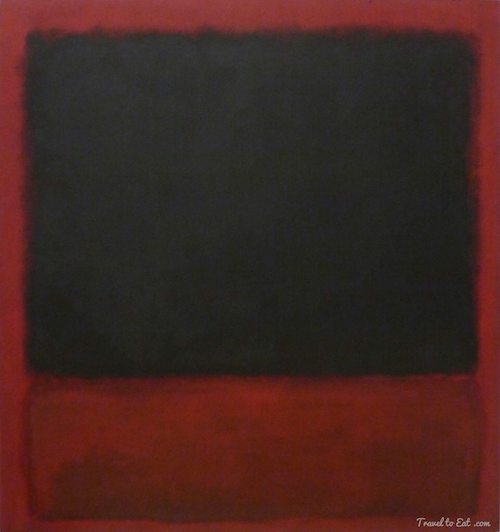
From 1950 to his death in 1970 Mark Rothko pursued a long investigation of color, with his palate becoming narrower and darker with time. The piece shown above illustrates his process, beginning with a saturated red canvas, then building up the blocks of blurred color. Abstract expressionism is all about the process.
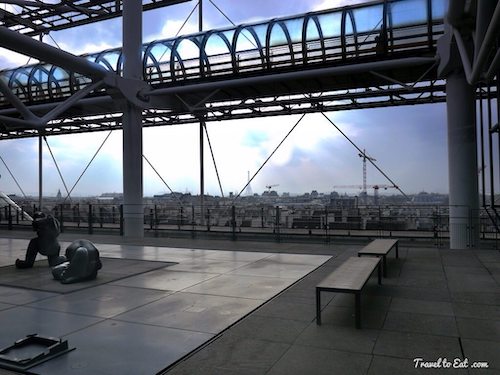
The 5th floor covers the period after 1965, including the pop-art movement and figurative art. We went up to see the view but it was closed. This has been a little long winded description of remarkable art, I wanted to give some measure to the depth and breadth of the collection. This is a huge museum and you could literally spend days here. If you enjoy art, this is definitely a must see in Paris (plus there is a great view). I may do some posts on the individual artists in the future, rather than a huge encompassing view like this, let me know what you like.
References:
Centre Pompidou: http://www.centrepompidou.fr/en/THE-CENTRE-POMPIDOU
Bibliothéque Publique D'information (DPI): http://www.bpi.fr/en/index.html
Photography vs Impressionism: http://www.dafyddkemp.com/photography.pdf

